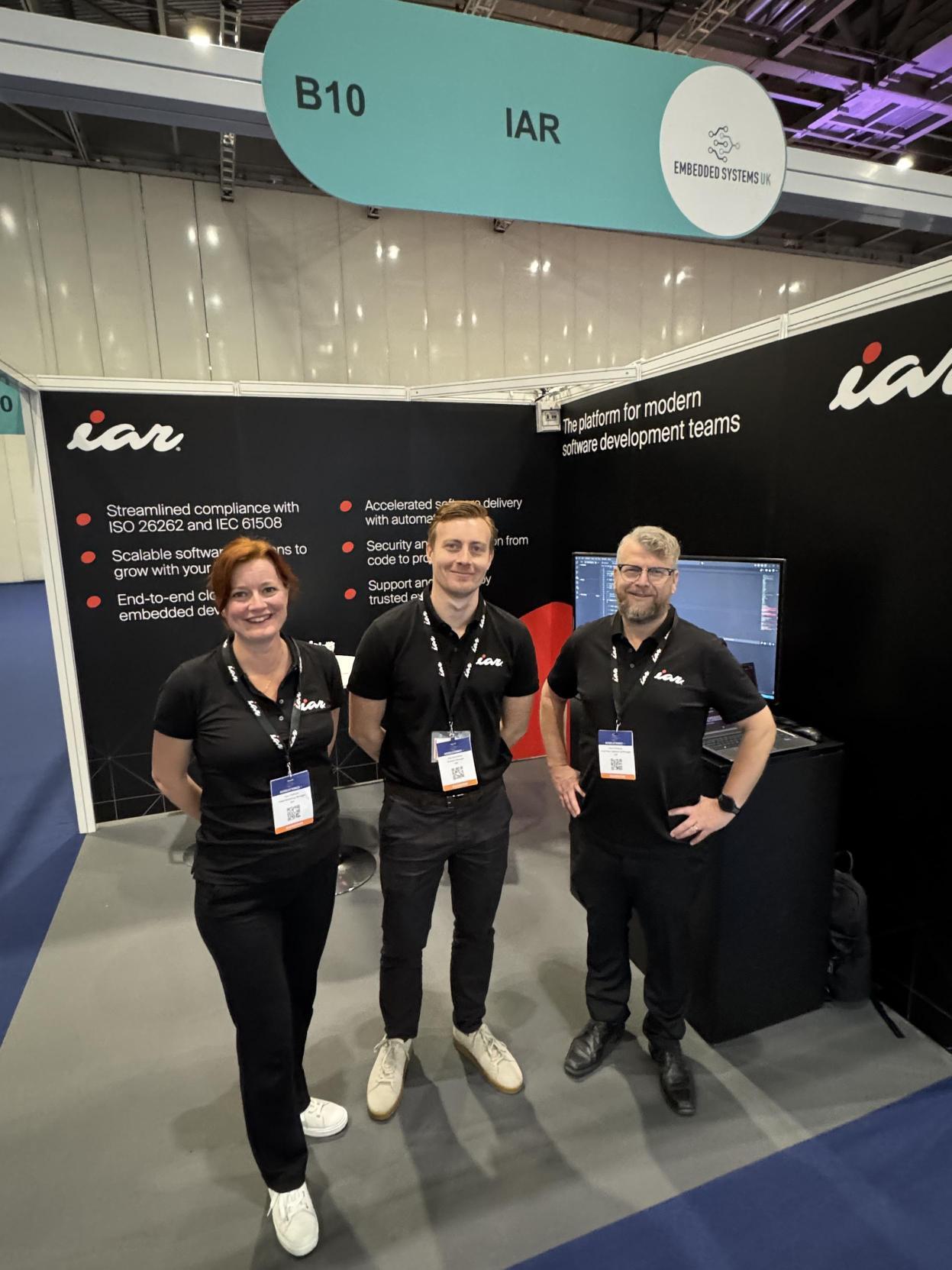From AI to functional safety: Key insights from Microelectronics UK
- By Tora Fridholm
- 4 min read

Reskilling and AI take the spotlight
The conference featured inspiring talks on topics such as smart factories, functional safety, embedded security, and embedded AI, while also addressing skill gaps and new ways of working driven by modern technology. It was encouraging to see such a diverse, forward-thinking agenda that tackled the industry’s most pressing challenges.
One standout session was led by David Edwards, Global Head of Workforce Planning at Ericsson, titled "Empowering Workforces in the Age of Automation". His focus was on debunking common myths about AI in the workplace.
Contrary to popular fear, AI is not here to replace jobs. Instead, it creates new roles and demands for new skills. Edwards reminded the audience that many jobs we hold today didn’t exist 60 years ago. While the future skills landscape is uncertain, preparing for adaptability across multiple potential futures is key. Humans remain central, as building trust in AI and supervising its decisions is essential.
Edwards noted he was likely the only HR professional speaking at a technical conference, but in fact, other panels also emphasized reskilling and upskilling. Clearly, workforce transformation is a hot topic in the microelectronics industry.
Functional safety matters across industries
Helen Monkhouse from HORIBA MIRA presented "Certifying Embedded Software for Functional Safety," emphasizing the difference between certification and assurance. Certification supports assurance but does not replace it, and confidence is earned through evidence, not bought through certification.
I would add that when starting any embedded project requiring safety assurance, working with vendors who can support your compliance efforts is crucial. At IAR, we do this by providing pre-certified development tools and long-term support, enabling development teams to focus on assuring the compliance of their products rather than their tools, accelerating the overall assurance effort.
Secure-by-design: security must start at design
Poonam Yadav, Director of SYSTRON Lab at the University of York, emphasized in the session “Embedded Cybersecurity in the Age of IoT” that security is the foundation of a product, driven by regulation, and that secure-by-design must start at the very beginning of the design.
At IAR, we see the secure product lifecycle as a practical framework that helps embedded teams move from concept to compliance with confidence. With the IAR platform as an enabler, combining secure development tools, provisioning capabilities, and lifecycle security practices, organizations can lift embedded security to the level regulators, customers, and the market now demand. Learn more in our recent blog post “Shifting left for a secure product lifecycle”.
 The IAR team ready to great visitors at Microelectronics UK
The IAR team ready to great visitors at Microelectronics UK
The real power of an event is the people in the room
Of course, the highlight of any live event is the people. And the UK microelectronics crowd did not disappoint! According to the buzz on the show floor, the last major microelectronics event in the UK was almost two decades ago, perhaps making attendees even more enthusiastic to finally have an event like this happening in London.
The atmosphere was further energized by an announcement from the tech minister, Kanishka Narayan MP, unveiling a £10 million Innovate UK fund to support small and midsized semiconductor enterprises. With so much momentum, it’s exciting to think about what Microelectronics UK 2026 might bring.
Meanwhile, for readers interested in functional safety, check out our recent blog post: “DIY vs Buy: A Short Guide on Toolchain Validation for Functional Safety”.

